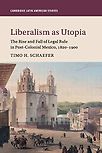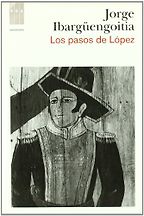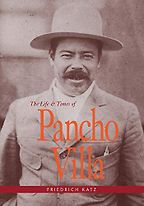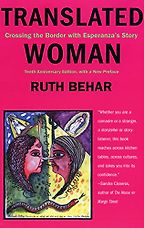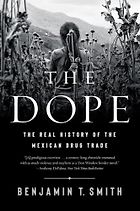Why is Mexican history interesting to study?
Mexico has played a crucial role in modern global history. It was the first part of mainland America colonised by a European people. It became the richest part of the biggest, richest early modern European empire—the Spanish empire. It produced a lot of the silver bullion that would drive European economic expansion and economic globalisation in the period between 1500 and 1800, roughly speaking, which coincided with the colonial period in Mexico.
Mexico is part of a world region, Latin America, that reflects certain dimensions of global history better, or more intensely, than others—dimensions that people are increasingly trying to grapple with. Latin America was colonised by Europe for the longest period of time and also most deeply, in terms of cultural and institutional transfers taking place.
It is a region that threw off European rule—in the Mexican case, Spanish rule—abruptly and violently. And being the first world region in the modern era to free itself from European imperial rule, it has since had more time than other formerly colonised regions to attempt to reckon with the legacies of that imperialism.
How can you become a republic and adhere to ideals of citizen equality when, before that, you were a region conquered by violence and ruled by hierarchies based on racial difference? Even in the UK, the US, Canada and Europe, these are dilemmas that we’ve been trying to come to grips with publicly in recent years.
In the biggest part of the world, which is a post-colonial world, this is a dilemma that has been on the agenda since at least the middle of the 20th century, but in Latin America and in Mexico it goes back all the way to the beginning of the 19th century—the beginning of the modern era.
All five books you’ve recommended are in some way related to provincial Mexico. Why is that important, given that one thing everyone will know about Mexico is it has an enormous metropolis in Mexico City?
One of the ways in which historians used to misrepresent Mexican history is that they thought that power always resided in the centre and radiated outwards from Mexico City. I’ve chosen these books, in part, as a way of proving the opposite. In Mexican history, power often developed in social settings quite far removed from the centre and then moved inwards and was able from seemingly marginal locations to shape Mexican history as a whole. This was true, for example, of the three most cataclysmic Mexican historical events: conquest, independence, and (twentieth-century) revolution. And it appears to be true again in the present, with the criminal violence originally tied to the drug trade, which has also been reshaping the country from the provinces.
Your first recommendation for us is Camilla Townsend’s Malintzin’s Choices: An Indian Woman in the Conquest of Mexico. Tell us about the book and a bit about who Malintzin was.
Malintzin was born in a small town in coastal Veracruz state by the Gulf of Mexico in the twilight years of what we now call the Aztec Empire, which was based in Central Mexico. There’s a lot that we don’t know for certain about her life. She’s apparently the daughter of a local nobleman or one of that nobleman’s less important wives or concubines. You had a system of polygamy in the Mesoamerican cultural world at that time, at least for higher-ranking people.
We don’t know her real name; we don’t know what name she was called by after she was born. When she was between eight and twelve years old, she was given away to (or maybe captured by) Nahua slave traders—merchants associated with the dominant Aztec Empire. She was then sold as a slave to a Maya town down the coast and a few years later she was given by her new owners as a peace offering to the Spanish conquistadors, who had just arrived on the Mexican coast.
“Mexico has played a crucial role in modern global history”
The interesting thing about Malintzin’s life, and what Townsend’s book is about, is how this woman of very obscure origins, from a powerless, subordinate social position, became one of the most important players in what we have come to call the Conquest of Mexico.
Part of what makes the book by Townsend so fascinating is that this is a life that we can know very little about because people didn’t bother talking about obscure women in the historical record. But based on Townsend’s extensive knowledge of the cultural world in which Malintzin grew up, and based on her mastery of native language sources, she is able to piece together a plausible story of what Malintzin’s life was like, what her motivations were, and things like that.
Malintzin quickly learned to translate from Nahuatl into Spanish and therefore became a critical intermediary in the Spaniards’ dealings with the people of Central Mexico.
The story of Malintzin’s name is interesting. The Spanish name her Marina. And because she takes on this really important role as an intermediary, the indigenous people of Central Mexico with whom she comes in contact give her a common honorific. They add the syllable ‘tzin’ at the end of her name, so she’s no longer Marina but Marintzin. But those people can’t pronounce the Spanish R, so they say it as an L and she becomes Malintzin.
But that’s not where the story ends. Today, it is considered more respectful to refer to her as Malintzin. That is certainly what Townsend thinks, because that is what indigenous people called her, and it also does justice to the status that she’s able to achieve. In fact, the Spaniards don’t understand Nahuatl, and they don’t hear the Nahuatl pronunciation right, and so they don’t call her Malintzin, they call her Malinche.
For the longest time, if you were talking about her you would talk about ‘La Malinche.’ She became the reviled symbol in Mexican history for Mexican nationalists of an indigenous traitor making common cause with the enemy. Malinche was the wrong way of referring to her because it was how the Spaniards misheard the Indigenous pronunciation of her name, which was in itself a garbled and modified version of the name the Spaniards had originally given her. It became a very pejorative way of referring to her.
Was there some justification in the assessment that she was the agent of the invaders, or was she caught up in something and was trying to make ends meet through her life? Were lots of other people in the same sort of position?
With the series of events and processes that we usually call the Conquest of Mexico, everybody was caught up in something that was much larger than themselves and of which they could control very few parts. There were many people in similar situations, in the sense that—and this is a major corrective that historians like Townsend have recently brought to early colonial Mexican history—probably the majority of indigenous people with whom the Spaniards came in contact were—or, after early defeats, very quickly became—their collaborators, but in a subordinate position.
“She is able to piece together a plausible story of what Malintzin’s life was like”
Malintzin was a collaborator and she was also a victim, but what’s fascinating is what she was able to do with the hand she was dealt. Consider again her position. She’s given away when she’s eight years old. She’s sold into slavery. She’s then given as a slave to these new conquerors. She’s presumably sexually used by her previous owners as a teenager, and she’s certainly sexually used by the Spaniards. Her labour is being exploited. She has to do what she is told. Because of her linguistic gifts, she realises that she has something that her new owners want. She’s able to leverage that gift—with what we must assume is a lot of pluck and courage and quickness of mind and intelligence and strategic thinking—into a power, and she becomes this ambiguous authority figure.
Towards the end of her life, she manages—and this is an argument that Townsend makes—by shrewdly assessing her situation and trying to figure out what she can do, to secure a comfortable life for herself. For a while, she’s Cortés’s concubine and bears him his first recognised son. Later, she marries another Spaniard, who is not a leader like Cortés but is still quite important in the hierarchy of the Conquest of Mexico.
She passes away in 1529 from a European disease. At that point, she is, in the context of recently conquered Mexico, certainly one of the most powerful women around.
Let’s move on to Jorge Ibargüengoitia’s Los pasos de López, also known by the title Los Conspiradores. Is this book set during the Mexican Revolution?
This book is set in a Mexican revolution, but not the Mexican Revolution. “The” Mexican Revolution was from 1910 to 1920; this book is about the Mexican War of Independence, or Revolution for Independence.
Los Conspiradores is a historical novel that fictionalises the early parts of the Mexican War of Independence and, in particular, the conspiracy led by Father Miguel Hidalgo, the parish priest of Dolores in Guanajuato. It fictionalises these events in part by giving fictional names to all of the characters and to all of the towns in which it is set. At the same time, it is very recognisable that these are real historical figures, even though Ibargüengoitia changes some details for dramatic or ironic purposes. He stays fairly close to the real history and especially to what we know of Hidalgo, the central figure in that history.
In the novel, that figure is called Domingo Perignon and he’s also a parish priest. He seems incredibly and perhaps culpably naive and almost easy-going about this momentous enterprise to rise up against the Spanish colonial power. At the same time, and paradoxically, he also seems incredibly farsighted. He is alone among the conspirators who populate the pages of this novel in realising that they’re putting in motion events that they won’t be able to control, and who seems to be aware of the fact that the likeliest outcome is that this is going to end in death.
Hidalgo/Perignon is the main link between the conspirators and the popular classes of New Spain because he’s the parish priest of a small provincial town. He also realises from the very beginning that once you call ordinary Mexicans—farm workers, tenants, mine workers, etc.—to insurrection, you’re not going to be able to control exactly how they’re going to behave. He’s very sanguine about that, to the horror of some of his co-conspirators. He’s a mysterious figure, attractive in his idealism and lack of respect for social conventions, but also frightfully careless about the violence and the loss of life and the destruction that he’s helping to unleash.
What are the advantages of it being a novel over any historical account there might be of the independence movement? Is it just that it’s more accessible and it tells a more human story or is there something else that it particularly brings out?
It’s very accessible, it tells a lot of human stories, and it is very alive to irony. It’s an attempt at demystification written at a time when, in Mexico, it was still very hard to see the independence movement as anything other than wholly heroic. It was difficult to discuss their flaws or discuss in any detail who the conspirators really were, and Ibargüengoitia situates them very believably in an elite provincial social world.
He was writing at a time when Latin American writers, including Mexican writers like Carlos Fuentes, were trying quite hard to make sense of their countries’ history but did so in a somewhat grandiose and perhaps, in their less successful works, almost pompous manner. Ibargüengoitia writes about history with more irony and detachment. He tries to humanise it.
“Los Conspiradores is…very much a story of provincial Mexico changing the course of Mexican history”
Los Conspiradores is also very much a story of provincial Mexico changing the course of Mexican history. It would be an exaggeration to say that the War for Independence in Mexico started in a marginal location. It started in what was the most agriculturally fertile part of colonial Mexico, a part of Mexico that also had many mines, so in that sense it was quite rich.But it certainly was quite a distance away from Mexico City, which was the locus of colonial administrative power.
And the small town (today called Dolores Hidalgo) where, famously, Hidalgo rang the church bells and called his parishioners to arms—which is a moment that is retold in this novel—is a very small, insignificant village on the edge of that agricultural breadbasket. It’s not a place where you would imagine transcendent historical events to originate.
When did he write the novel?
It was published in 1982. It was the last novel he completed writing.
The next book you’ve recommended for us is Friedrich Katz’s The Life and Times of Pancho Villa.
This time the book is in fact about the Mexican Revolution, which included popular armies raised by Emiliano Zapata in the south and Pancho Villa in the north. At one point, those two leaders actually met in Mexico City, but they didn’t find much to talk about or they found it awkward to talk to each other because, among other reasons, Pancho Villa was a teetotaler and Zapata thought that a talk between revolutionary generals should include toasting with mezcal or some drinking.
This is a massive book—it’s close to a thousand pages. Pancho Villa is a figure around whom many myths have accumulated over time. On the one hand, he’s somebody about whom we know quite a bit because he was friendly with a number of intellectuals or journalists during his lifetime, who observed him at close quarters and then gave us character sketches of him. On the other hand, we know quite little about his origins because he was a self-mythologiser. He would tell his life story in different ways to different people who asked him about it.
This biography is by Friedrich Katz, who was one of the great historians of the Mexican Revolution. Katz was a social historian, and he spends quite a bit of time explaining to us, if we can’t know exactly the origins of Pancho Villa himself, what was the milieu that he came from. What was the social milieu that produced the Mexican Revolution in the north, which was originally the most important location of revolutionary activity? But he always returns to the life story of this amazing, larger-than-life figure, Pancho Villa.
What was Pancho Villa before he became a military revolutionary leader—was he a soldier or was he a politician?
What wasn’t he before he became a military revolutionary leader? He was born on a hacienda (an agricultural estate) to a tenant or a sharecropper or an agricultural labourer. He left that estate in his early teens, though I’m not sure if that is known with certainty. As the story goes, he left because the administrator of that hacienda raped Villa’s sister, and Villa avenged his sister’s assault by killing the administrator, and that’s how he first became an outlaw.
It’s a story that is very resonant because in Mexico, especially in Northern Mexico at the time, a lot of social power was concentrated in these large land holdings, whose owners or administrators exercised not only economic power but also a lot of quasi-judicial coercion over the people living on their estates. Certainly, this experience of hacienda owners or hacienda administrators raping or ‘seducing’ the daughters of people who live on their land is very plausible.
“He always returns to the life story of this amazing, larger-than-life figure, Pancho Villa”
This book is, in part, an attempt to demythologise Pancho Villa. Friedrich Katz tells us that there’s no evidence in Villa’s early criminal files of him having murdered that administrator. While it seems very plausible that he might have left the hacienda because of abuses carried out by the hacienda owner or the hacienda administrator, it seems less likely that he would have killed that person and gotten away with it, and that this fact would not have come up in police investigations into him later in life.
At any rate, after he left the hacienda, Pancho Villa became a bandit. He spent some of his time holding up people and robbing travellers and there seems to be a Robin Hood element to this. There’s the idea that he’s a ‘social bandit’—the phrase coined by English Marxist historian Eric Hobsbawm—that is, somebody who is able to blend in with the ordinary population because they direct their criminality against the dominant classes, against rich people, and they might even be seen by the popular classes as heroes for their exploits.
However, Villa was not only a bandit before he joined the Mexican Revolution. He also, at some point, settled down and seems to have worked at various occupations—including as a guardsman for North American mining companies, transporting bullion out of mines. He tried to establish himself as a shopkeeper in Chihuahua City. It’s still impossible to come up with the chronology of his life and say, ‘This is when he did this. This is when he did that.’ But from Katz we get the idea that he led an early life that was a mixture of criminal activities and licit, even respectable activities.
Was the revolution, broadly speaking, a democratic revolution? Was it seeking to overthrow a system of big landownership and quasi-judicial supervision of the lower social orders with something more democratically based?
Yes, very much so. The revolution itself started as a successful attempt to overthrow a regime in which landowners were immensely powerful. That regime was presided over by President Porfirio Díaz, who, when the revolution broke out, had ruled Mexico dictatorially for the last thirty-four years—more or less, with one interruption early on in his rule.
Eventually, though, the revolution descended into a fight between different revolutionary factions. There was a lot of conflict within the revolutionary coalition that was ultimately about what ‘democracy’ should mean. Francisco Madero, the revolution’s early leader, thought that it was enough to overthrow Porfirio Díaz, the dictator, and then start an electoral democracy, which had already been Mexico’s political system for most of the time since Mexico’s independence in 1821. But other revolutionary factions (including the one eventually led by Villa) wanted a more radical agrarian revolution—a revolution with a social dimension on top of the political dimension.
Let’s move on to the next book, Ruth Behar’s Translated Woman: Crossing the Border with Esperanza’s Story. What does this tell us about Mexican history?
Like Camilla Townsend’s book on Malintzin, this is a book about a woman born into absolutely no power in a small town in the Mexican provinces. But unlike Townsend’s book, this is a book about a woman who didn’t become powerful in her lifetime.
Ruth Behar is an anthropologist and this book belongs to a genre of ethnographic writing that is very illuminating about what Mexican society was like in the 20th century, which consists of interviewing what we might call ordinary people, many of them very poor people, and then editing and reordering the answers of those people into narratives of their lives. Ruth Behar also combines those interview elements with a bit of her own life story and with the process of how she came to know and to interview Esperanza.
One of the reasons to read these books, and perhaps this book in particular, is that their ‘ordinary’ protagonists are often quite extraordinary storytellers. In this case, you get this life story told by a poor Mexican woman who mostly works as a sort of peddler. She’s worked as a servant for times. She used to be stuck in a horrible marriage, where she was violently abused by her husband for sixteen years. But when Behar interviews her, Esperanza is single and has decided not to remarry because she says, ‘I was married before and that taught me not to remarry’. She has become this still poor but very strong-spirited, independent woman just making a life for herself and her children. She’s able to look back on her life and on a lot of suffering that she’s had to live through with a sense of humour, even though also a sense of indignation.
Your final recommendation for us is The Dope: The Real History of the Mexican Drug Trade, by Benjamin Smith.
This is a rare book, in the sense that it’s a book written for a popular audience that also makes real academic scholarly contributions. It’s a very readable book written in a very approachable style. At the same time, it is probably the best scholarly study that we have of the history of Mexican drug trafficking.
It goes right back to its deep origins in the early part of the 20th century.
That’s right. It tells the story of Mexican drug trafficking and also of drug farming. Cultivating marijuana and heroin poppies has been an attractive option for many Mexican peasants because even though it became criminalised early in the 20th century, from the point of view of the drug trafficker and the producer of the drug, it’s a victimless crime. The drugs might of course mess up lives elsewhere—in the case of heroin, it surely has the power to mess up lives—but as the producer you don’t see any of that, and so you’re not doing anything that necessarily feels that wrong.
This has changed recently, but for the longest time Mexico was a drug-producing but not a drug-consuming country. There’s been some bohemian underground culture of heroin consumption and pot smoking etc., but far less than in the United States. These drugs were produced for the longest time for an international market, especially the North American market.
“It’s a book written for a popular audience that also makes real academic scholarly contributions”
And the people profiting from the drug production were not only the traffickers and the producers themselves, but it was also the state, and people in positions of authority. This was an activity that early on was protected and run as a racket by state agencies and police forces, parts of the army, and by the governors of some of these states that first became significant centres of drug production.
What has happened in Mexico more recently—in the last three or four decades—is that for various reasons the state and state agencies have ceded control of the production and trafficking of drugs. That job has been taken up by criminal groups. With these criminal groups, we have far less of a sense of who’s in control. There’s much more infighting among those who want to control and tax and profiteer off drug production and trafficking in certain locations or along certain routes—and that’s why it has become far more violent than it used to be.
Five Books aims to keep its book recommendations and interviews up to date. If you are the interviewee and would like to update your choice of books (or even just what you say about them) please email us at [email protected]
Five Books interviews are expensive to produce. If you've enjoyed this interview, please support us by donating a small amount.

